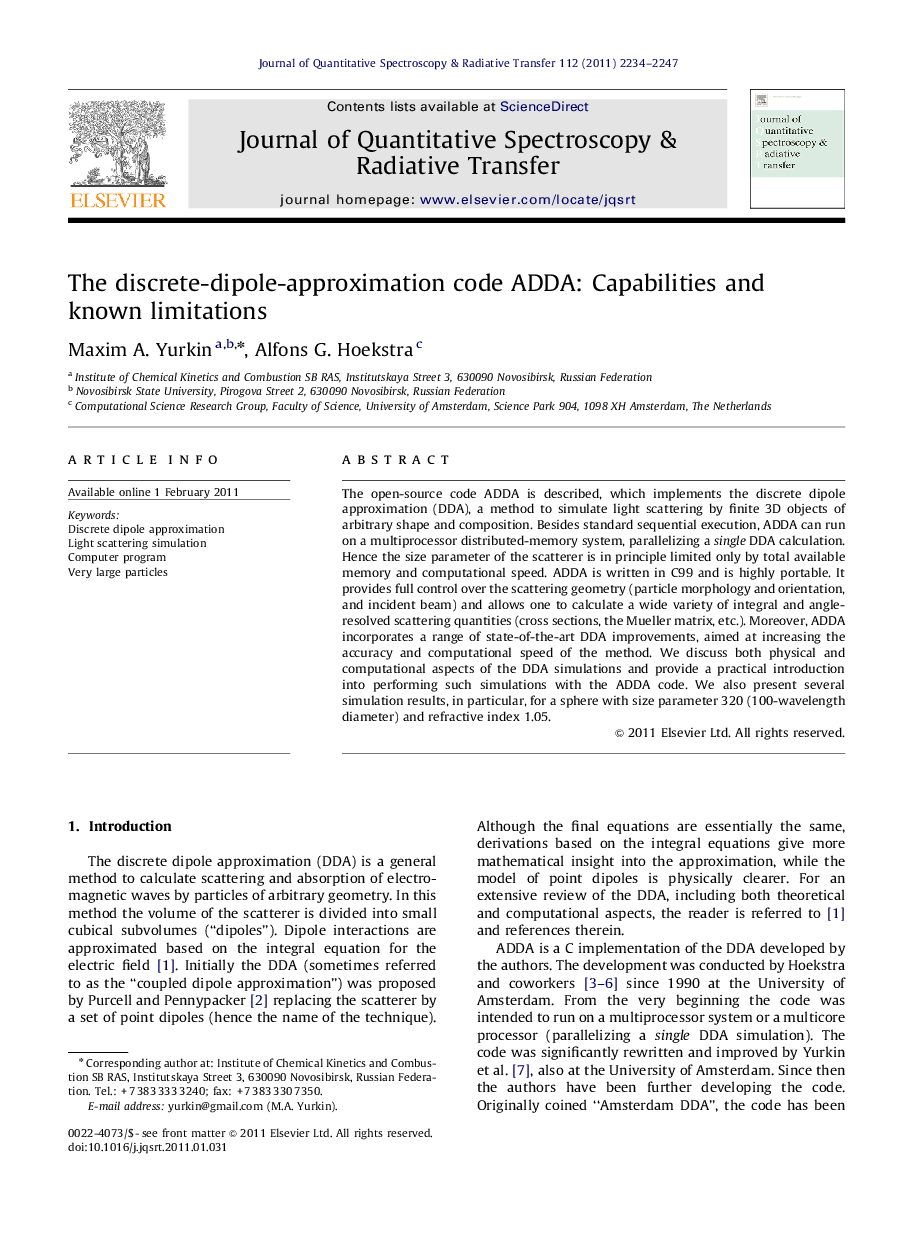| Article ID | Journal | Published Year | Pages | File Type |
|---|---|---|---|---|
| 5429733 | Journal of Quantitative Spectroscopy and Radiative Transfer | 2011 | 14 Pages |
The open-source code ADDA is described, which implements the discrete dipole approximation (DDA), a method to simulate light scattering by finite 3D objects of arbitrary shape and composition. Besides standard sequential execution, ADDA can run on a multiprocessor distributed-memory system, parallelizing a single DDA calculation. Hence the size parameter of the scatterer is in principle limited only by total available memory and computational speed. ADDA is written in C99 and is highly portable. It provides full control over the scattering geometry (particle morphology and orientation, and incident beam) and allows one to calculate a wide variety of integral and angle-resolved scattering quantities (cross sections, the Mueller matrix, etc.). Moreover, ADDA incorporates a range of state-of-the-art DDA improvements, aimed at increasing the accuracy and computational speed of the method. We discuss both physical and computational aspects of the DDA simulations and provide a practical introduction into performing such simulations with the ADDA code. We also present several simulation results, in particular, for a sphere with size parameter 320 (100-wavelength diameter) and refractive index 1.05.
Research highlightsâºSimulation of light scattering by 3D objects of arbitrary shape and composition. âºOpen-source parallel code implementing the discrete dipole approximation. ⺠Single simulation executed on a multiprocessor distributed-memory system. âºSphere with 100-wavelength diameter and refractive index 1.05. âºADDA includes state-of-the art improvements of the DDA.
